

National Museum of American History. Anacostia Community Museum. Anacostia Community Museum. National Museum of the American Indian. National Museum of African American History and Culture. » Treasure Trove of 1960s Movement Photos Available Online and Free to Teachers Zinn Education Project. Harvey Richards dedicated much of his life to shining a light on movements for social justice.
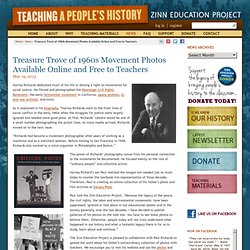
He filmed and photographed the Mississippi Civil Rights Movement, the early farmworker movement in California, peace protests, GI anti-war activists, and more. As is explained in his biography, “Harvey Richards went to the front lines of social conflict in the early 1960s when the struggles for justice were largely ignored and needed some good press. At first, Richards’ camera would be one of a small number photographing the picket lines. As more media arrived, Richards moved on to the next issue. “Richards had become a movement photographer after years of working as a machinist and as a merchant seaman. The power of Richards’ photography comes from his personal connection to the movements he documented—he focused keenly on the role of “ordinary people” and collective action.
Let us know how you use the photos and your students’ comments. History of San Francisco Place Names. The Afro American - Google News Archive Search. U.S. and World Maps and Puzzles - Free Maps That Teach. US Geography Mega Quiz 1100 varied and interesting questions about the United States.
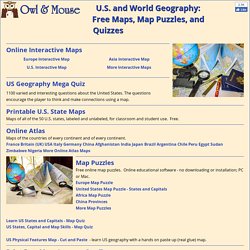
The questions encourage the player to think and make connections using a map. Printable U.S. State Maps Maps of all of the 50 U.S. states, labeled and unlabeled, for classroom and student use. Online Atlas Maps of the countries of every continent and of every continent. Print Free Maps Large or Small Free online software to print outline maps - one page to 7 feet wide. Megamaps - free maps large and small Great for classroom maps. Maps by Place: World: Print World Maps Online Atlas Continents and Regions Maps Continents Map Puzzle World Features Map Puzzle World Monuments Map Puzzle Europe: The "Golden State's" Brutal Past Through Native Eyes. An arrowhead which was excavated at an Indian burial site in Los Angeles is displayed Wednesday, May 26, 2004.
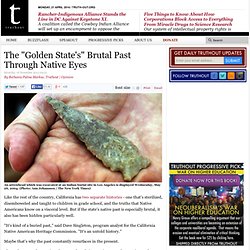
(Photo: Ann Johansson / The New York Times) Like the rest of the country, California has two separate histories - one that's sterilized, disemboweled and taught to children in grade school, and the truths that Native Americans know on a visceral level. But if the state's native past is especially brutal, it also has been hidden particularly well.
"It's kind of a buried past," said Dave Singleton, program analyst for the California Native American Heritage Commission. "It's an untold history. " Richmond Community History Project (ROHO) Malcolm X - A Message to the Grassroots - November 10, 1963. What it's like to be a 'Gypsy'... (a crash course in Romani history) - Gypsy Appropriations. History in Color. Interactive Floor Plan. The Arthur Ross Hall of Meteorites explores essential questions about the origins of our solar system some 4.6 billion years ago by examining meteorites, rocky fragments from space that reveal clues about the formation and evolution of the Sun and planets.
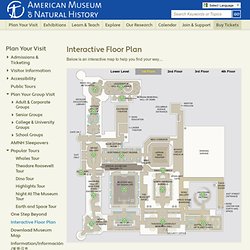
The David S. and Ruth L. Gottesman Hall of Planet Earth, the first part of the Rose Center to open in June 1999, displays an amazing collection of geological specimens, chosen specifically to show how our planet works. National Museum of the American Indian. The National Museum of the American Indian houses one of the world’s largest and most diverse collections of its kind.
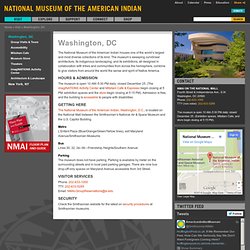
The museum’s sweeping curvilinear architecture, its indigenous landscaping, and its exhibitions, all designed in collaboration with tribes and communities from across the hemisphere, combine to give visitors from around the world the sense and spirit of Native America. Hours & Admission The museum is open 10 AM–5:30 PM daily; closed December 25. (The imagiNATIONS Activity Center and Mitsitam Cafe & Espresso begin closing at 5 PM; exhibition spaces and the store begin closing at 5:15 PM). Admission is free, and the building is accessible to people with disabilities. Getting Here The National Museum of the American Indian, Washington, D.C., is located on the National Mall between the Smithsonian’s National Air & Space Museum and the U.S. MetroL’Enfant Plaza (Blue/Orange/Green/Yellow lines), exit Maryland Avenue/Smithsonian Museums ParkingThe museum does not have parking. French Revolution II/WomenMarch_to_Versailles.
James Baldwin: The Price of the Ticket. Aired: 08/23/201301:25:12Rating: NR The life, works and beliefs of the late writer and civil rights activist are recounted: what it is to be born black, impoverished, gifted, and gay in a world that has yet to understand that “all men are brothers.”

James Baldwin tells his own story in this emotional portrait.